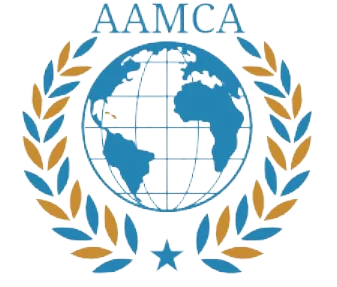The Dangers of Fraudulent ISO Certificates
The landscape of ISO certification, particularly ISO 27001, is marred by the prevalence of fraudulent certificates that pose significant risks to organizations and their stakeholders. These counterfeit documents often lead to false assurance regarding an organization’s data security measures. Unlike genuine ISO certifications, which require rigorous compliance with established standards, fraudulent certificates are issued without proper audits or evaluations. This lapse creates vulnerabilities in the organization’s information security management system (ISMS), leaving sensitive data exposed to potential breaches.
Organizations that rely on fake ISO certifications may inadvertently invite detrimental consequences. For instance, a breach resulting from inadequate security measures can lead to the loss of customer trust, damaging the company’s reputation. Businesses must recognize that the absence of credible certification can also hinder opportunities for partnerships and collaborations, as stakeholders increasingly prioritize security standards in their supply chain decisions. Moreover, regulatory bodies and clients often demand reliable proof of compliance, and the absence of genuine certification could lead to legal complications and financial penalties.
Emphasizing the necessity of accredited ISO certifications is vital to safeguarding data and enhancing organizational credibility. Genuine ISO 27001 certification involves comprehensive audits conducted by accredited bodies, which ensure that the organization’s policies, procedures, and practices align with international standards for information security. These authentic audits involve meticulous verification of an organization’s ISMS, significantly reducing the likelihood of data breaches and reinforcing trust across supply chains.
Ultimately, while fraudulent ISO certificates may offer a facade of compliance, the risks associated with such deception far outweigh any perceived benefits. Organizations must commit to obtaining genuine certifications through reputable, accredited sources to ensure organizational safety and long-term success in the complex landscape of information security.
ISO 27001: Beyond IT Security
ISO 27001 is recognized as a vital standard that focuses on establishing an Information Security Management System (ISMS). It transcends the conventional boundaries of IT security by emphasizing the collaborative involvement of various departments within an organization. This holistic approach is paramount, as information security is no longer the sole responsibility of the IT department; rather, it necessitates a commitment from all organizational levels.
The essence of ISO 27001 lies in its systematic risk management framework. Organizations must identify, assess, and treat information security risks in a structured manner. This includes determining potential threats and vulnerabilities that can impact critical assets. The emphasis on risk management ensures that information security measures are tailored to the specific context of the organization, aligning security initiatives with its overall objectives.
Documentation plays a significant role in ISO 27001 compliance. It is imperative for organizations to maintain comprehensive records of their ISMS processes, risk assessments, and treatment measures. Proper documentation not only facilitates operational efficiency but also serves as proof of compliance during audits. Transparency in documentation reinforces accountability and promotes a culture of security awareness across the organization.
Furthermore, adherence to ISO 27001 requires organizations to conduct proactive audits and regular updates of their information security practices. This iterative process helps in identifying gaps and weaknesses in the existing system, allowing for timely corrections. Continuous improvement is a fundamental principle of the standard—organizations must adapt their ISMS in response to emerging threats and changes in the technological landscape.
Ultimately, ISO 27001 stands as a comprehensive standard that champions a collective responsibility for information security, underscoring the need for a well-documented, risk-managed, and continuously updated approach to safeguarding sensitive information across all organizational facets.
Implementation Challenges of ISO 27001
The implementation of ISO 27001 presents several challenges that organizations may not fully appreciate. A common misconception is the belief that attaining compliance with this international standard is a straightforward process that requires minimal effort. In reality, achieving ISO 27001 certification demands considerable commitment and resources from an organization. Many businesses underestimate the time and human capital necessary to successfully implement an Information Security Management System (ISMS), often leading to inadequate preparation and unsatisfactory results.
Another prevalent misunderstanding is the notion that ISO 27001 implementation is solely the responsibility of the IT department. In fact, effective implementation requires a holistic approach that engages various departments across the organization. Information security is fundamentally a cross-functional concern; therefore, security objectives must align with broader business goals and be integrated at all organizational levels. This necessitates strong collaboration between IT, human resources, legal, and operational teams, which can be a significant hurdle for some organizations due to existing silos.
Moreover, insufficient expertise is a critical challenge during the ISO 27001 implementation. Many organizations lack personnel with the specialized knowledge and experience needed to navigate the complexities of the standard. This often results in reliance on external consultants, which can be costly and may not guarantee desired outcomes. Another prevalent issue is poor documentation practices. ISO 27001 requires comprehensive documentation to demonstrate compliance and operational effectiveness, and organizations that neglect this essential aspect can face difficulties during audits, leading to delays and potential non-compliance.
Furthermore, adequate resource allocation is vital for success. Organizations frequently face limitations in budget and manpower, which can hamper their ability to implement necessary policies and controls. By acknowledging these challenges and misconceptions, organizations can better prepare for a successful ISO 27001 certification journey, ultimately enhancing their information security posture.
The Importance of Accredited Certifications
In the realm of quality management and compliance, the significance of obtaining ISO certifications from accredited bodies cannot be overstated. Accredited certifications ensure that the processes and procedures of organizations are not only evaluated but also endorsed by recognized authorities, such as DAKKS. These accredited bodies uphold rigorous assessment standards, providing companies with credibility and a competitive edge in their respective markets. An ISO certification from an accredited organization signifies that a business adheres to international standards and demonstrates a commitment to quality and continuous improvement.
Conversely, non-accredited or fraudulent certificates can undermine these standards and lead to severe repercussions. When businesses opt for certifications that lack accreditation, they risk associating with organizations that may not have the necessary expertise or legitimacy required to conduct thorough evaluations. Such actions can result in legal consequences, including fines and sanctions, as regulators increasingly scrutinize compliance with official standards. Additionally, obtaining a non-accredited certificate may severely damage a company’s reputation, leading to a loss of customer trust and, ultimately, revenue.
To mitigate these risks, companies must take a proactive approach in verifying the authenticity of their ISO certifications. One effective way to achieve this is by using reputable databases such as those offered by TÜV Süd or the British Standards Institution (BSI). These resources provide detailed information about accredited certifications and allow businesses to confirm that their certificates are valid and issued by recognized bodies. By ensuring that their certifications are backed by accredited organizations, companies can reinforce their commitment to quality, enhance their reputation within the industry, and secure their legal standing in the global market.

 from Africa, Asia and United Nations here for your comfort in different languages, but you can click on our translator in different languages on our Website.
from Africa, Asia and United Nations here for your comfort in different languages, but you can click on our translator in different languages on our Website.
